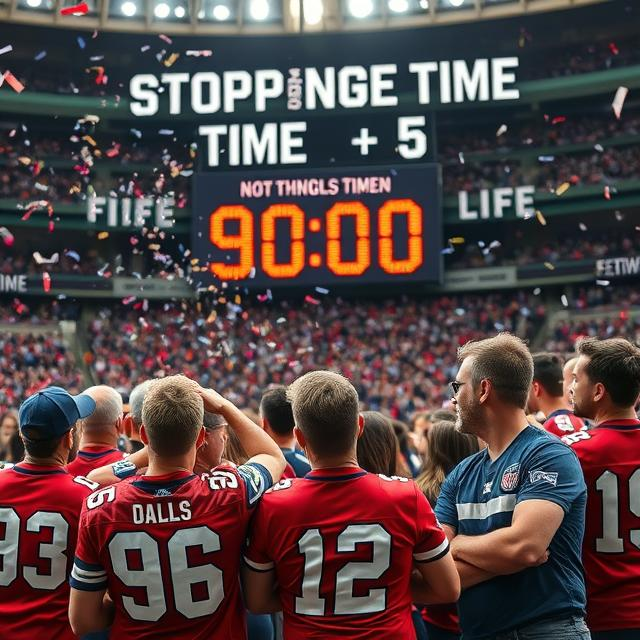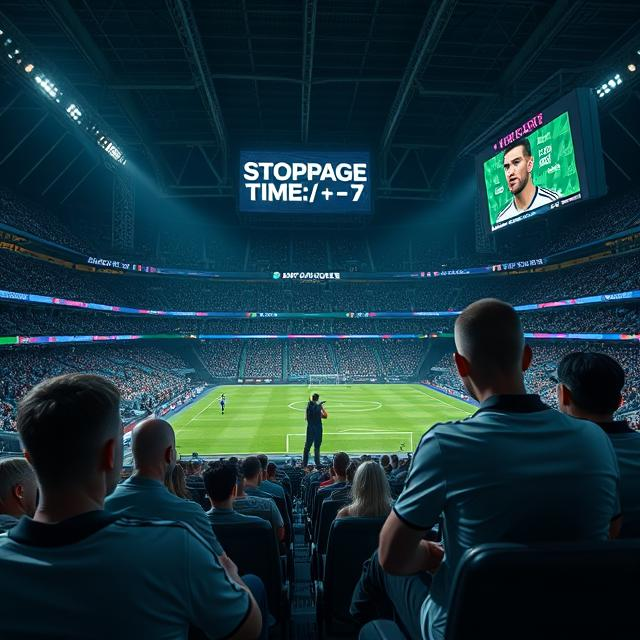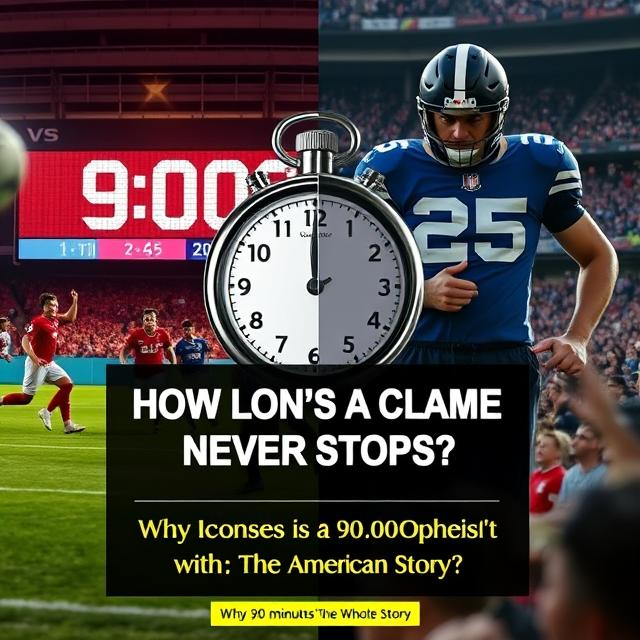Introduction: Why Soccer’s Timing Puzzles American Fans, How Long Is a Soccer Game?
Picture this: You’ve carved out time to watch a Major League Soccer (MLS) match, expecting it to wrap up in two hours like a movie. But suddenly, it’s 2:15 later, and the game is still going. Or maybe your 8-year-old signed up for their first soccer league, and you’re scrambling to figure out if games are 30 minutes or an hour long. Sound familiar?
For Americans raised on the clock-stopping drama of the NFL or the quick-fire quarters of basketball, soccer’s running clock and mysterious “stoppage time” can feel downright confusing. But fear not—we’re breaking down soccer’s timing rules, from MLS showdowns to pint-sized youth leagues. By the end, you’ll navigate match durations like a pro. Let’s kick things off!
1. The Basics: How Long Is a Professional Soccer Game?
A standard professional soccer match lasts 90 minutes, split into two 45-minute halves. But unlike American sports, the clock never stops, even for injuries, substitutions, or heated referee debates. Instead, referees tack on “stoppage time” (or “injury time”) at the end of each half to account for delays.

Why Doesn’t the Clock Stop?
Soccer’s continuous clock is rooted in tradition. The sport prioritizes fluidity, keeping the action rolling like a nonstop highlight reel. Think of it as a cross-country road trip: You have a planned route (90 minutes), but traffic, pit stops, or detours (injuries, substitutions) might add extra time to your ETA.
Stoppage Time Explained
- Typical Additions: 1–5 minutes per half.
- Extreme Cases: Up to 10+ minutes for serious injuries, VAR reviews, or time-wasting antics (yes, players sometimes fake cramps to kill the clock!).
- Who Decides? The referee estimates time lost and announces it at the end of each half.
Pro Tip: If you’re streaming a game, always expect the broadcast to run 2+ hours. A 2023 study showed the average MLS match lasts 2 hours and 10 minutes from kickoff to final whistle, including halftime and stoppages.
2. Halftime: The 15-Minute Pit Stop
Halftime in soccer is a no-nonsense 15-minute break—enough time to grab a drink, replay the first half’s best moments, or vent about the referee’s questionable offside calls.

How It Compares to Other Sports
- NFL: 12 minutes (regular season) or 30 minutes (Super Bowl).
- NBA: 15 minutes.
- MLB: No formal halftime, just a 7th-inning stretch!
Fun Fact: Halftime isn’t just for resting. Coaches use this window to tweak tactics. In a 2019 LA Galaxy game, coach Guillermo Barros Schelotto switched formations at halftime, leading to a comeback win!
3. Extra Time & Penalties: The Drama Unfolds
In knockout tournaments (like the World Cup or Lamar Hunt U.S. Open Cup), draws aren’t an option. If teams are tied after 90 minutes, they’ll play extra time: two 15-minute halves. If still tied, it’s penalty kicks—a high-pressure tiebreaker that’s equal parts thrilling and heart-wrenching.
Extra Time Breakdown
- Total Added Time: 30 minutes (15+15).
- Golden Goal? Nope! The “golden goal” rule (next goal wins) was scrapped in 2004. Teams play the full 30 minutes.
- Real-World Example: The 2014 World Cup Final between Germany and Argentina went into extra time, with Mario Götze scoring a 113th-minute winner. Total match time: 123 minutes!
Penalty Shootouts: The Ultimate Gambit
- Average Duration: 20–30 minutes.
- Strategy: Coaches pick 5 penalty takers, but it can go to sudden death.
- Did You Know? The U.S. Women’s National Team (USWNT) has a stellar PK record, winning 80% of shootouts in major tournaments!
4. Youth Soccer: Timing Adjustments for Young Kickers
Youth soccer games are shorter to match kids’ attention spans and energy levels. Here’s a detailed breakdown for U.S. leagues:
| Age Group | Half Length | Total Game Time | Ball Size |
|---|---|---|---|
| U6 (Under 6) | 8–10 minutes | 16–20 minutes | Size 3 |
| U8 | 15–20 minutes | 30–40 minutes | Size 3 |
| U12 | 25–30 minutes | 50–60 minutes | Size 4 |
| High School | 40 minutes | 80 minutes | Size 5 |
Why Shorter Games?
- Focus: Young kids max out their concentration after 10–15 minutes.
- Development: Smaller fields and fewer players (e.g., 4v4 for U6) keep the game fast-paced and fun.
- Safety: Less fatigue = fewer injuries.
Parent Hack: Always pack snacks and a foldable chair! A U8 game might end in 30 minutes, but post-match playdates can stretch your park visit to two hours.
5. What Can Delay a Soccer Game?
Even with a running clock, soccer isn’t immune to delays. Here’s what can extend match time:

Weather Woes
- Lightning: Games pause for 30+ minutes per safety protocols. In 2022, an NWSL match between Orlando Pride and KC Current was delayed twice for nearly two hours!
- Extreme Heat: Referees might add water breaks (1–3 minutes) in scorching conditions.
VAR Checks: The Replay Revolution
Video Assistant Referee (VAR) reviews add ~2 minutes per check. While they ensure fairness, they’ve sparked debates. For instance, a 2023 MLS Cup playoff match saw a 5-minute VAR delay to confirm a handball call—fans booed, but the correct decision prevailed.
Injuries & Substitutions
- Serious Injuries: A player stretchered off can add 5+ minutes of stoppage time.
- Subs: Teams get 3–5 substitutions per game, each eating ~30 seconds.
6. How Soccer Stacks Up Against Other Sports
Let’s settle the score: How does soccer’s timing compare to America’s favorite pastimes?
| Sport | Total Game Time | Average Broadcast Duration |
|---|---|---|
| Soccer (MLS) | 90 minutes + stops | 2 hours, 10 minutes |
| NFL | 60 minutes | 3 hours, 12 minutes |
| NBA | 48 minutes | 2 hours, 15 minutes |
| MLB | No clock | 3 hours, 6 minutes |
Key Takeaway: Soccer is one of the shortest live sports to watch—if you ignore stoppage time!
7. Pro Tips for Planning Your Soccer Schedule
Whether you’re a spectator, player, or soccer parent, these hacks will save you time:

Related post :- (2025 NFL Draft Order: A Breakdown of Team Positions and Key Takeaways)
For Viewers
- Streaming Services: Set reminders for 2.5 hours to avoid missing the finale.
- Playoff Matches: Block 3+ hours for potential extra time and penalties.
For Parents
- Arrive Early: Youth games often start ahead of schedule.
- Weather Apps: Check lightning alerts—games can restart hours later!
For Players
- Halftime Fuel: Eat a banana or energy bar to recharge.
- Stoppage Time Fitness: Train for unpredictable game endings with interval runs.
Related post :-
Conclusion: Master the Clock, Love the Game
Now that you’ve unlocked the secrets of soccer timing, you’re ready to embrace the sport like never before. Plan watch parties with confidence, coach your kid’s team without clock confusion, and appreciate the drama of those “garbage time” goals in stoppage minutes.
Ready to Join the Soccer Wave?
- Share this guide with friends stuck in halftime limbo.
- Support local soccer—attend a USL Championship or NCAA match.
- Got a story? Tweet us @SoccerTimeUSA about your wildest extra-time experience!
- How Long Is a Soccer Game?
Soccer isn’t just a game; it’s a rhythm of patience, passion, and perfectly timed moments. Let’s make every minute count! ⚽
